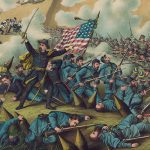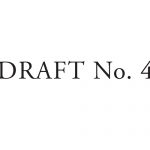Along a historic American highway, the heart and soul of a nation is revealed
By Jim Dodson
Over the past few months I’ve been traveling the Great Wagon Road, researching a book about the 18th-century route that brought generations of Scotch-Irish, English and German immigrants to the American South, including both branches of my family.
Roughly following the so-called Great Warrior’s Path that lay along the eastern slopes of the Appalachian mountains from Pennsylvania to Georgia, used for millennia by native American peoples for hunting and warfare, the Great Wagon Road stretched more than 800 miles from Philadelphia to Augusta, Georgia, and was said to be the most traveled road in Colonial America.
Thomas Jefferson’s daddy mapped and named it, and a young George Washington cut his teeth scouting and fighting Indians along it. Dan’l Boone traveled the Road from North Carolina to the unexplored frontiers of Kentucky and Ohio, while three major wars that shaped our national identity were conducted along it: the French and Indian War followed by the American Revolution, and a dozen critical battles of the American Civil War, most notably the bloodbaths at Antietam and Gettysburg.
By my rough count at least three presidents and more than a dozen colleges and universities grew up along the Great Road, as I first heard a Salem College history professor call it 40 years ago, not to mention a dozen of Eastern America’s most important towns and cities, home to social visionaries and inventors who created everything from the Conestoga wagon to Texas Pete hot sauce and Krispy Kreme Doughnuts
Most of the early Quakers who populated Guilford and Alamance counties also made their way to a new life in these parts by traveling the Great Wagon Road, a branch of which was called the Carolina Road that took others (including my English and Scottish forebears) to Hillsborough and the coast.
Though I’m not yet halfway on my travels from Philadelphia to Georgia, thus far it has been a trip full of rewarding surprises, unexpected turns, fresh insights and inspiring encounters. In my quest to know more about where we collectively came from — and how this remarkable road shaped the nation we inhabit today — I’ve already traversed a dozen major battlefields and museums, attended lectures and church services, hung at the elbows of area historians and academic scholars, spent hours in local archives, historical associations and historic sites, investigated iconic forefathers and forgotten heroes, unapologetically played tourist everywhere I could, checked out the hokiest roadside attractions and sampled local cooking every chance I got.
What a simple pleasure this project has been — not to mention a refresher course on the power of American democracy during one of the most divisive years in memory.
For perspective, try Googling “What Americans Know About Their Own History” and you may be deeply alarmed to learn what we collectively don’t know about our past and how our democracy was designed to work. Various polls over the past decade have shown, for example, that 67 percent of Americans have no idea what the purpose of the U.S. Constitution is for — or what exactly an “amendment” means. Another recent poll indicated more than half of high school graduates thought the 4th of July celebrated the end of the Civil War, another that the majority of Americans couldn’t simply name the three main branches of American government.
The estimated half million frontier settlers who came down America’s first great “highway” beginning in the early 18th century — Ulster Scots, German Lutherans, Moravian bretheren, Amish and Menonite farmers, Presbyterian and Anglican preachers, and Eastern Jews — had no prescient awareness of the diverse nation they were collectively creating. The vast majority were simply ordinary folks who’d crossed oceans to seek a fresh start, religious freedom and a piece of the New World they could claim as home.
In the process, the native peoples of North America were largely marginalized and exterminated, a tale as old as the hills, and an entire race was enslaved — mistakes we are still struggling to come to terms with and compensate for today.
For this and other reasons, my desire to travel the “Road that made America,” as a prominent Pennsylvania historian called it during a long lunch conversation, has been building in me for at least two decades.
That’s why my travels along the Great Wagon Road have been such a soul-stirring pleasure — a much-needed reminder of why America has always been great and simply needs to get back in touch with the values and principles that drew our forebears to a wilderness in the first place.
In Philadelphia, I dined at the historic City Tavern where the Sons of Liberty plotted the birth of a nation. I sat for a golden hour in a sunlit pew at Christ Church where Washington, Franklin and Betsy Ross worshipped, chatting with a fellow who lives and breathes the values of Benjamin Franklin, Americans’ first true Renaissance man
At Lancaster, I dove deep into Amish culture and found myself trying to eat my way through the nation’s oldest farmers’ market and discovering the origins of the revolutionary Conestoga wagon that carried pioneer Americans across the continent. Just down the road in York, where in 1778 the Second Continental Congress signed the Articles of Confederation (a prelude to our Constitution). I sat in on a delightful night of local historians spinning tales about a town where the American Industrial Revolution essentially began.
On a cold morning in late November, I attended the 154th reading of Abe Lincoln’s extraordinary Gettysburg Address with a distinguished Lincoln biographer, standing on the very spot in the National Cemetery where Lincoln gave the most inspiring speech in American history. Afterwards, I lunched with the nation’s leading Lincoln impersonator — a biology teacher from Illinois — who told me that “playing Lincoln” had profoundly changed his life in a dozen different ways. The next morning, I walked the famous battlefield at dawn where the course of the Civil War changed over three days in July of 1983. I could swear I heard drums.
Two weekends later, my wife and I joined a slow-moving line of cars inching across five miles of soulful Potomac countryside simply to drive — sans headlights — through the annual illumination of the Antietam National Battlefield, the 29th year that more than 1,500 area Scouts and volunteers have placed 23,000 luminaries on the tranquil killing ground where more Americans died on a single day than in any other battle. The next morning, we attended services at the oldest Episcopal church in West Virginia, just across the river in Shepherdstown, a gorgeous little Potomac town where the wounded of Antietam shared Trinity Church on alternate weeks going forward — the Union wounded one week, the wounded boys in butternut and gray the next.
In Hagerstown, Maryland, where the German wing of my family got off the GWR to head west to a new life in Cumberland and West Virginia, we attended a wonderful German Christmas market and spent an hour learning about the Colonial origins of Christmas in America during a walking tour of town-founder Jonathan Hager’s original stone house. Our guide was a retired career military man named Max Gross whose love of local history was flat-out contagious. “We are a blend of so many diverse cultures and people in America,” he said, explaining how various aspects of Christmas traditions really came from a dozen different cultures ranging from Poland to Turkey. “We think of these traditions as uniquely ours, but we are the splendid sum of so many cultures and people who came together in a wilderness to form the greatest democracy in history.”
I could go on indefinitely about the diverse and lovely Americans I’ve met on my little odyssey through time and history, the sacred places I’ve walked, the many surprising things I’ve managed to learn, and even the hokey tourist traps I’ve explored with boyish glee.
For this correspondent, the year ahead holds the promise of more spiritually enriching encounters with people from all walks of American life, a lesson of civic renewal among people who love their towns and communities with a passion that is palpable, a devotion that is true. Despite our present differences, their Great Road ancestors, I suspect, would be proud of how far they — and we — have come.
Contact Editor Jim Dodson at [email protected].


